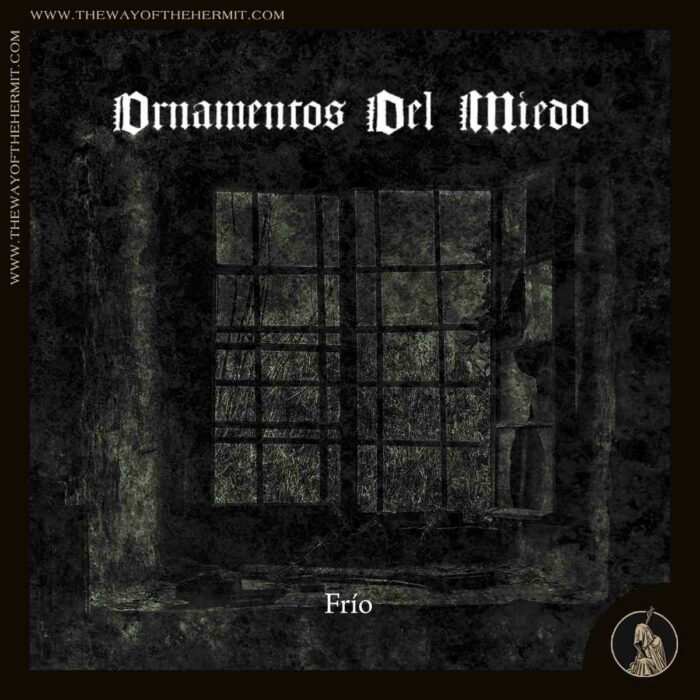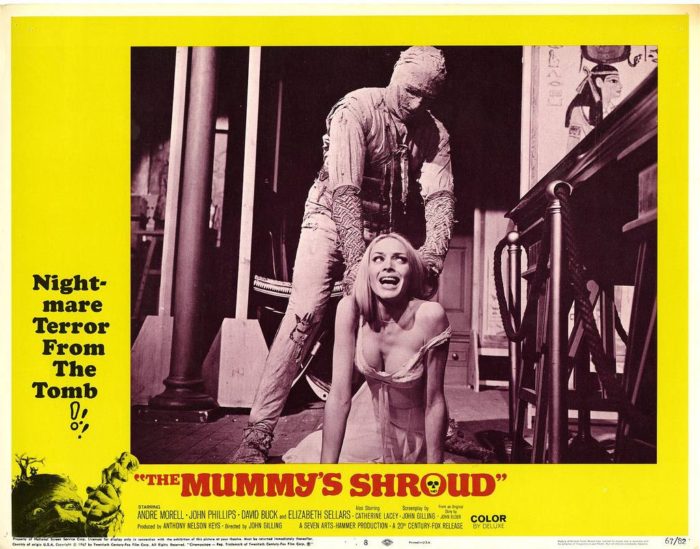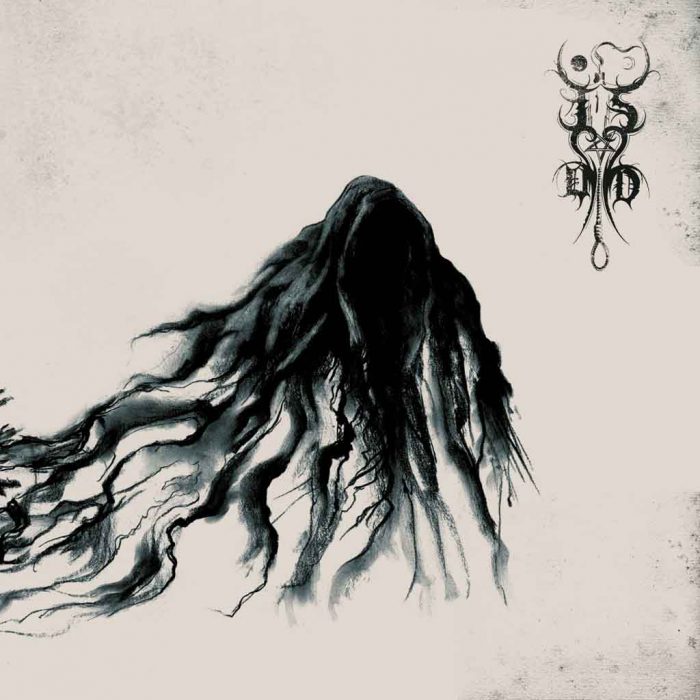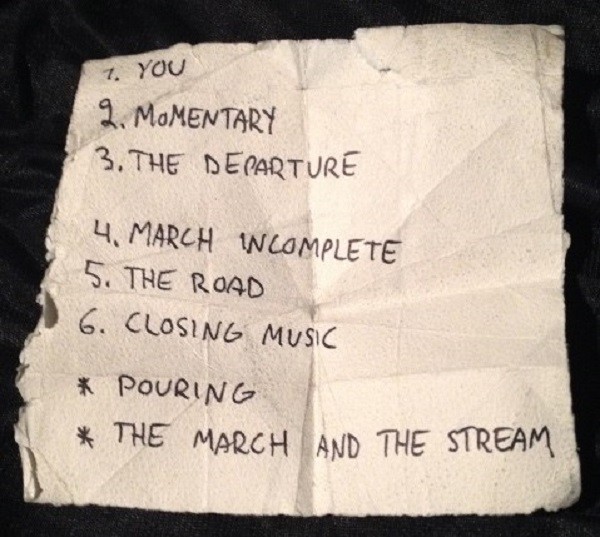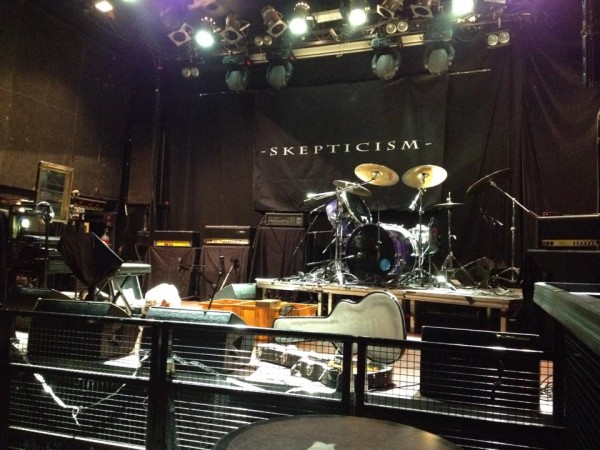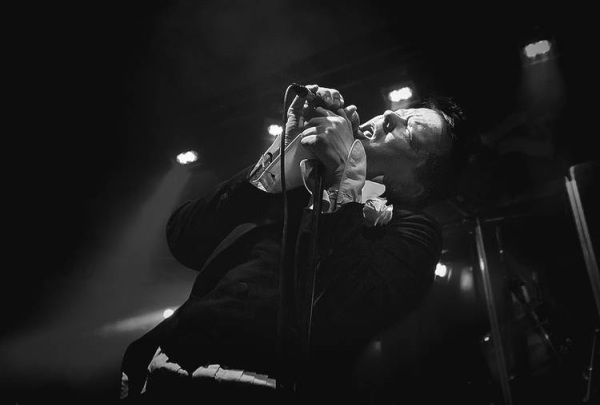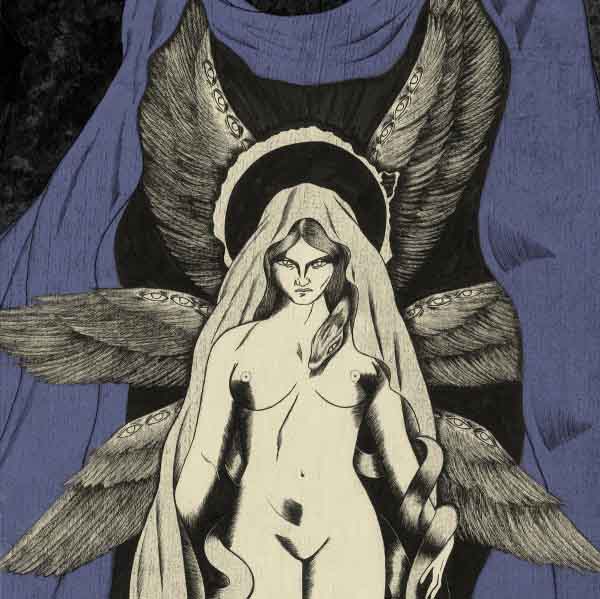funeral doom (original) (raw)
Funeral doom mixed with melodic Swedish-style black metal and some heavy metal elements, Ornamientos del Miedo might have a subtler influence in electronic music with this two-song EP of layers built around the same melodic progression, with breaks for counterpoint riffs before resuming momentum.
Tags: funeral doom, ornamientos del miedo
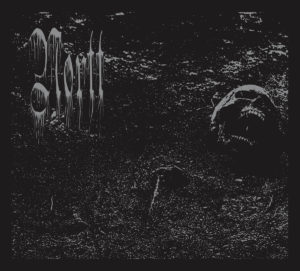
After a decade of nothingness and decay, Denmark’s Nortt re-emerges in the form of a third full length on pt. 2 of the Avantgarde Music canon (the rock n’ roll/new wave edition). Rising to prominence in the early days of the suicidal black metal wave but vanishing just as the Thy Lights and Nocturnal Depressions of those days brought the movement to self-parody black and white Myspace-metal, Nortt returns to a world that has mostly forgotten their existence. As fate has seen their fellow Total Holocaust Records peers of that time fall into the pits of post-rock (Hypothermia), drug addiction (Nachtmystium), or straight up oblivion (Blodulv), will Nortt’s funeral doom foundation lead to a more desirable outcome?
(more…)
Tags: 2017, Avantgarde music, Black Metal, boring, doom, drone, drugs, dsbm, funeral doom, heroin, metal, nortt
This dissection was contributed to Death Metal Underground by Neil Sigmundsson.
Although the song that is the subject of this article differs considerably in tone from most funeral doom metal, and indeed from most of Evoken’s own work, it utilizes the basic style of that genre: open, sustained, low register power chords played at very slow tempi. In “Omniscient,” clean guitar melodies and synthesizers provide the music with detail, color, and different senses of spaciousness. Layering, interplay between instruments, and timbre play important roles in developing themes and emphasizing different aspects of emotions. The song has no human voice, a feature that facilitates listener immersion and an unharnessed imagination. The structure is simple and linear: A B C D. The four sections are described sequentially below in terms of one interpretation of the piece; this is an attempt to put into words a somewhat vague combination of images, thoughts, feelings, and emotions that occurs when listening to it. If this descriptive method comes across as tedious or unappealing, consider it the shortcoming of the writer and let the music speak for itself.
I. Description
Section A: The introduction revolves around a melody played on clean guitar, the tonality of which gives a vague feeling of uneasiness and of mystery. The technique of sliding into and between notes is used as ornamentation, presumably to make the melody more evocative. The slow tempo lends a sense of low energy, and the synthesizer adds a haziness to the atmosphere. When the electric guitar and percussion enter the song, the resulting sensation is similar to stepping from an inside room, where one can sense the heat outside, into the open air, or of transitioning from the awakening state of half-consciousness to that of complete alertness and awareness. The synthesizer then plays its part an octave higher than before, overpowering like the sharp glare of the sun and evoking an image of barrenness, vastness, and lifelessness. The timbre greatly increases the effect. After the synthesizer descends back to its original register, the theme is fully developed and the scene completely comprehended.
Section B: After a short silence, the music resumes at a crawl, as if an oppressive heat is sapping away all energy. The guitars reach up and play a short sequence with conviction, but fall back down in response to the synthesizer, as if defeated by the overwhelming wretchedness and aridity of existence. The entire pattern temporarily falls to a slightly lower register, conveying a sense of sinking to greater depths, though it musters enough energy to return to its original place. Listening to this section feels like crossing a desert, wondering whether the farther side will ever be reached with so little energy, when suddenly…
Section C: Great vigor and motivation well up from an unknown source, generating forward and upward motion from stagnation. The tempo increases, as does the speed of the drum pattern. The power chords are no longer relegated to the far lowest notes. The synthesizer, which represented the oppressive force, disappears and is replaced by a slowly rising clean guitar pattern. The overall tone here is energetic and anticipatory, and there is a sense of striving and of willpower where previously there was none. However, in the guitars there is a moment that balances this nature with sobriety and gravity, a few slightly dissonant notes that signify that all adversity has not been overcome. Like a reminder of the continued presence of the antagonistic element, this slight dissonance checks the melody, which falls accordingly (though it maintains its pace and energy) and dwells at its lowest point before steadily rising again.
Section D: Section C trails off at its highest stable point, and at this point the music slows down again and “opens up,” signifying that a plateau or a destination has been reached. Indeed, in the final and longest section of the song, a realization occurs. The first hint of this realization is a sequence of four notes played on the keyboard and accompanied by percussion. The “breathy” timbre and relatively low volume give a sense of distance and of large scale. This part evokes the emotions associated with pausing one’s toils, looking up at the clouds, and realizing their beauty. The electric guitars then enter enthusiastically, mimicking the four note pattern with power chords, and the aforementioned keyboard sequence gives way to a second one. This new keyboard part starts with a heart-warming tone that rises slightly and then settles into a sobering note of gravity, though even this last bit of weight and resistance falls away at the end of the sequence.
The full realization is represented by a blissful clean guitar melody that acts as an additional layer atop the second keyboard part and the power chords. The keyboards color the guitar melody in different ways with each note and with swells in volume, highlighting various nuances of the newfound conviction and peace of mind: solace, tranquility, the hugeness of nature and the cosmos and corresponding miniscule stature of man, the passing away of all things, and finally an understanding and acceptance that leads to release from all doubts and worries. The timbre of the synthesizers provides an airy nature to the conclusion of the song, yet this quality is light and fresh and differs greatly from the heavy, burdensome atmosphere of the introduction. The clean guitars eventually stop and the keyboards return to a fuller version of the first hint of the realization, the image that catalyzed the epiphany being revisited in terms of the new insight obtained. The full realization then resumes. By this point, all tension is completely resolved. Additional synthesizer effects give a sense of dissolving and of passing away, and the song begins to fade in volume. The clean guitar ends on an uplifting note.
II. Discussion
In the above description of “Omniscient,” the instruments symbolize different aspects of human experience. The electric guitar and the percussion represent the visceral sensations of the body, the clean guitar the movements of the mind, and the synthesizer the perception of the external environment. The role of the synthesizer in portraying an external oppressive force in sections A and B has already been described: it can be seen as a sort of indifferent but nevertheless harmful natural phenomenon. Of the four parts of the song, section B is the only one with no clean guitar, perhaps symbolizing how during an onerous experience in which the willpower of the mind has been defeated, the focus of consciousness oscillates between the suffering of the body and the alleged cause of that suffering. In section C the synthesizer disappears, but the sobering, slightly dissonant notes in both the clean guitar and the underlying power chords acknowledge that the environment/situation has not changed. Rather, the upwelling of energy from within is so powerful that it dominates the field of perception, as reflected in the dramatic increase in percussion activity. This section can be viewed as finding motivation to fight and overcome an oppositional force.
Section D resolves all conflict and tension in the song, not through external triumph – towards which section C seems directed – but through internal release. Maintaining the established symbolism and looking at the clean guitar parts (and lack thereof) throughout the song, there is a series that outlines a transformation of mind: A mind confused (A) becomes a mind completely defeated (B), which in turn is revitalized and invigorated (C) and finally becomes purified and instilled with confidence and peace (D). Considering the keyboards, as mentioned previously, the role and the qualities of those in section D are significantly different from those in sections A and B. Yet even at the very end of the song, there is still a sobering effect and a sense of gravity in the keyboards; the elation does not go unchecked. As in section C, this is the clue that the external environment has not changed, only the perception of that environment. Thus, the mind has undergone a change and as a result, the perception of life has changed even though life situations have not. Recalling the words of Marcus Aurelius: “Things do not touch the soul, for they are external and remain immovable; but our perturbations come only from the opinion which is within…Take away thy opinion, and then there is taken away the complaint, “I have been harmed.” Take away the complaint, “I have been harmed,” and the harm is taken away.” This is the essence of the realization in “Omniscient”: It is the knowledge that, though we may feel pain and discomfort, and though we may endure hardship, suffering is not inextricably bound up with these experiences. The power that external events claim on personal wellbeing is dictated by the mind and by the will. In this way can man go through life as an invincible force, as a “promontory against which the waves continually break, but it stands firm and tames the fury of the water around it.” With this spirit and conviction does the clean guitar sail calmly over the keyboards in section D, giving a sense of total peace and affirming that everything is alright.
Along with Skepticism – Stormcrowfleet and Monolithe – Monolithe I, “Omniscient” shows that the funeral doom style lends itself naturally to compositions that are not funereal in tone. This style has been used as a means of wallowing and despairing, and it could be argued that despondence, hopelessness, etc. are “heavy” emotions, but the self-obsessed state of depression, being a state of stress and contraction, shrinks the scale of the music to the personal level. This effect is contrary to the “big” sound of the funeral doom style, and to the powerful fighting spirit of metal in general, indicating that perhaps the style is more suitable for large-scale, impersonal topics.
Regarding musical composition, the careful and directed development of a select set of ideas maximizes the evocative quality of music by allowing themes to blossom to their full expressive potential. Furthermore, this increases the coherence of compositions, even when the composer does not intend a specific meaning or message, because new ideas arise only when the old ones are exhausted. Thus, in musical composition, as in life, it is wiser to look to necessity than to extremity. Extremes of technical musicianship, speed, and structural complexity, though sometimes useful, are generally not necessary for metal music to be heavy (in the meaning of bearing existential weight, of having deep content as opposed to shallowness, and of communicating an aspect of reality that transcends the individual). “Omniscient,” in its beautiful simplicity, is evidence in favor of this point. In its logical and complete development, its highly evocative sounds, its clear depiction of an inspiring and uplifting transformation, and the reward and reminder that its conclusion bestow upon the listener, “Omniscient” is a superlative work of art.
Notes:
1. Evoken recorded Promo 2002 “in 1 day on a cheap-o 8 track recorder.” “Omniscient” stands far above the other four songs on the promo, although “Reverie in Tears” is also well composed. Dario Derna, who was the adept drummer of the death metal band Infester, played the keyboards on this release.
2. A rerecorded version of “Omniscient” with lyrics appeared on the 2010 split between Evoken and Beneath the Frozen Soil.
Tags: autism, black ambient, boring, Evoken, funeral doom, Hammer Horror, hipster bullshit, Marcus Aurelius, musical analysis, skepticism
Thou Shell of Death create funeral doom metal with what amounts to a lead keyboard layering sparkly and incongruously happy melodies over a background of churning doom-death riffing. Songs build slowly in circles, repeating two fundamental riffs with transitions to re-contextualize them before the cycle is entered again. Over this, shrouded vocals of alternating howls and dark death vocal chanting provide guidance and anchor rhythm which is divided between the slightly off-center keyboards and on-point guitars and drums.
Much like Winter, who similarly used slow guitars as a backdrop to keyboard and noise accompaniment, Thou Shell of Death depend on the contrast to give their work endurance. This serves as both strength and weakness in that it may create an intense layered atmosphere, but can also substitute for the “metal method” of interlocking riffs providing a shifting context like a villanelle or other poem form where repeated lines take on new meaning as the previous line changes the framing in which the new line will be heard. In particular, the risk is that vocals and keyboards will take over from the guitars which will entirely take a background role as happens several times on the two tracks that make up Grave Hill, a new 12″ from Thou Shell of Death. In each song, the journey it takes the listener on first descends through intense deepening and then contradicts itself, finding momentary light which is crushed, giving way to a greater light found in the new path adopted. While this occurs on a very small scale in these 17-minute tracks, the result is nonetheless a sense of descending into a cave and finding a new world that one feared to look at initially.
This 34-minute release takes the listener through a path of dark and morbid passages with the exuberant keyboards both providing contrast and becoming slowly absorbed so that they take on a morbid air. Fundamentally, however, this music debunks the illusion that funeral doom works well when finding despair; instead, what is found here is a type of melancholic wandering in the dark and threatening world of the ambiguous, with Thou Shell of Death like all metal bands finding beauty in the darkness and using it, re-interpreted in a new context, to instead inform our concept of beauty as relating to the structure of the journey and not the texture of the result. Its keyboards create an effect like that of 80s Goth where the “bittersweet” ambiguity of modern rock translates into an embrace of darkness through lightness toward the fear, delivering us into a new stygian world where possibilities exist despite society denying their presence.
Tags: funeral doom, thou shell of death
Finnish funeral doom metal band Skepticism performed their yet-unreleased fifth full-length album, Ordeal, in a live recording at Klubi in Turku, Finland on January 24, 2015. The event was also captured on film for an accompanying DVD to go alongside the album, in shades of what Empyrium did last years with their first performance in nearly a decade.
The band describes the new songs as “emotion-laden, crushing, and yet beautiful, more than ever before.” Visitors to the historic recording event received an exclusive re-issue of the band’s first 7” EP which was originally released in 1992. Ordeal will be released on Svart Records in May 2015 as a CD/DVD bundle and a LP/DVD set.
Skepticism commands a loyal following who want doom metal to fall neither into the nearly tuneless grinding of some doom-death or warmed over rock stylings of stoner doom, but prefer atmospheric and melodic music that creates a contrast within dark moods and can develop songs for a sense of being transported. The band formed in 1991 and since 1995 has released a stream of quality releases which remain enjoyed by a devoted cadre in the underground.
Tracklist:
- You
- Momentary
- The Departure
- March Incomplete
- The Road
- Closing Music
Plus bonus live versions of earlier tracks:
- Pouring
- The March and the Stream
Tags: Doom Metal, funeral doom, skepticism, svart records
Resembling a collision between space-ambient music, doom metal and black metal, Thou Shell of Death creates slow-paced doom metal with the atmosphere of black metal bands — a more melancholic, brooding and existentially nihilistic outlook — but like past doom metal greats Winter, the lead instrument here may well be the keyboards, which in reverb-heavy waves lace melody through crashing guitar chords which gives them both context and foreshadows development. The ethereal and spectral sound of the keyboards conveys simultaneously an otherworldly removal and a soaring sense of possibility, which temples the normal self-indulgence of doom metal into an exploration of wonder in the darkened halls of a fallen world.
Guitars on Sepulchral Silence intelligently vary texture in the background under the keyboards which are more clearly heard both through being louder in the mix and being a clearer sound, which makes their orientation as lead intelligence. The musical role of guitar in this context is to set a basic progression in the background which the keyboards riff against in order to produce a sense of convergence, as if actors were in harmony with their background and role rather than opposed. Often mid-paced, guitars use a variety of technique including fast downstroking and tremolo but just as often fall back to the Black Sabbath/Winter styled power chords played open, or strummed once and allowed to resonate. Behind them drums lag comfortably and minimally, removing what might have been a distraction to a role as timekeeper plus a sound of inexorable time that affirms emptiness. Each progression stands distinct and keyboards take advantage of this to set up a mood that, like ambient music even of the discotheque variety, resonates around the listener while vocals are demoted to speech filling in the gaps with a narrative to center the song. Over this, heavily reverbed vocals hang like shrouds and flags hanging torn above ruins, battered by the winds of history.
Avoiding the dual traps of becoming essentially slowed-down hard rock or slowed-down death metal, Thou Shell of Death renovates funeral doom music with a new variety of emotions and technique that avoids the pitfall of this music, which is that it is often tedious both from its slowness and the resulting relative invariance of its riff texture. While riffs are relatively few compared to death metal in these songs, as in black metal songs, each serves a purpose and riffs tend to change with lyrical progress, creating the sense of a morbid storybook tale narrated by a demon rather than a rock song over which someone is ad libbing Tolkien. From this basic approach, Sepulchral Silence makes a dense liquid atmosphere that provides all of the dread and despair of doom metal but with the adventurous spirit of black metal and the hope of discovery that pervades electronic music, creating a new voice for funeral doom.
http://www.youtube.com/watch?v=H8DhkroX9Uw
Tags: death metal, funeral doom, thou shell of death
Funeral doom innovators Skepticism plan to record their fifth album, Ordeal, live at Klubi in Turku, Finland on January 24, 2015. This marks a departure from their normal process of recording in studio but enables the band to record the album and video simultaneously for release on their new label, Svart Records, having transferred from Red Stream Records.
Visitors to the live show will also receive a re-issue of the first Skepticism 7″ EP originally released in 1992, which will be unavailable to the public. Skepticism formed in 1991, and recorded through the 1990s before unleashing their first full-length, Stormcrowfleet, in 1995.
Attracting fans for their ability to merge melody, theatrical song structures in the Celtic Frost style and abrasive slow and ponderous riffing in the best doom-death style, Skepticism took doom metal to the next level of slow and grinding music creating a pervasive sense of dread and resistance.
With their 1995 album Stormcrowfleet, Skepticism defined the funeral doom genre as entirely separate from the warmed-over rock of stoner and mainstream doom and, along with Winter, showed an entirely different direction for the future of that style. Since that time, Skepticism have released four full-length albums and two EPs to enthusiastic response by a dedicated fanbase.
Tags: funeral doom, red stream records, skepticism, svart records
Preposterous Creations put out a split between reclusive act – – – and by their own description, long-standing but frequently interrupted American band Dawning, who re-recorded their signature song “Divine Arrival of the Massive Hoof.” The result makes for interesting listening and aims to be obscure and withdrawn, which for the most part enhances the experience.
– – – are clearly aiming for the Deathspell Omega crowd, but using a more traditional heavy metal attack that might draw comparisons to Cradle of Filth and early Dimmu Borgir. However, what this band has over the art-rock crowd is that they believe in songs that still move with a sense of purpose toward clarifying a repeated rhythm and melody. This both brings them closer to rock, and away from the overly-configured aesthetic of later black metal. Most of these riffs would fit on a Fates Warning album and count as both heavy and interestingly melodic, but its melodies are a different story entirely and would be at home on a Celtic rock or world music album. The mixture of the two results in less of an oil-on-water fusion than heavy metal mixes normally do, mainly because it sticks to a solid basis of 1970s post-NWOBHM riffing technology.
Dawning brings out one track, but it’s a long and epic one; this is basically funeral doom metal with a 1980s Gothic influence. I realize that all 1980s is new again since there are similar political, economic and social conditions, but “Divine Arrival of the Massive Hoof” seems like it comes by this influence honestly. The result is dragging guitars under ringing keyboards that move into riffs with a covert groove that expand into more battle-drawn riffing. From this lighter faire, it returns to the dark and accompanies it with keyboards of the Vincent Price-meets-Summoning variety. As a result, it creates a dark atmosphere with the explorative inner nature of Gothic and industrial.
Tags: Black Metal, dawning, funeral doom, preposterous creations
